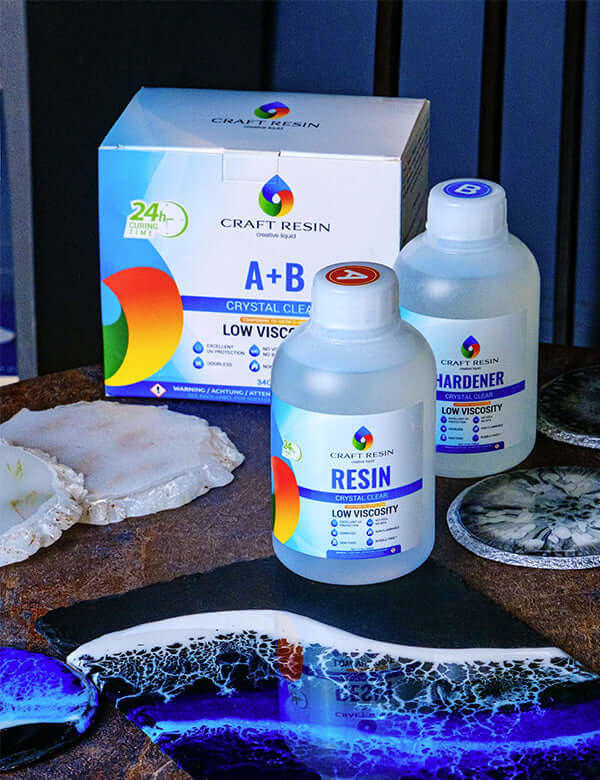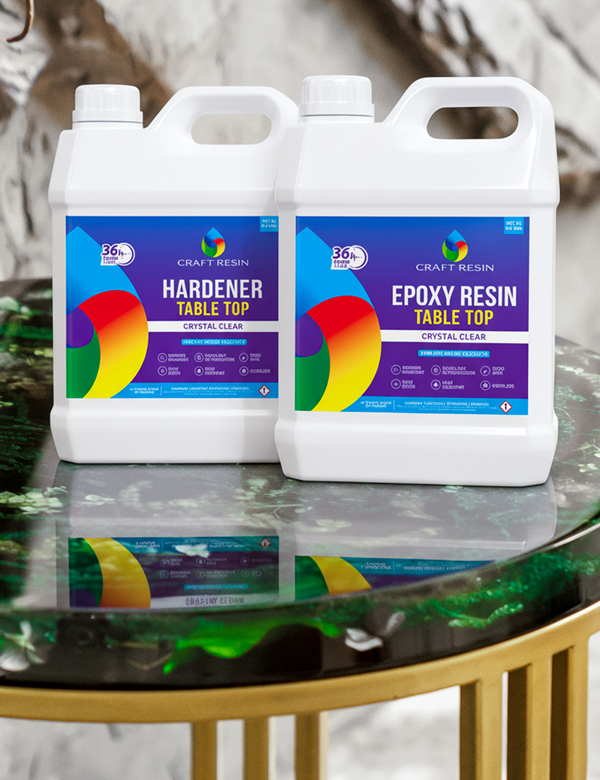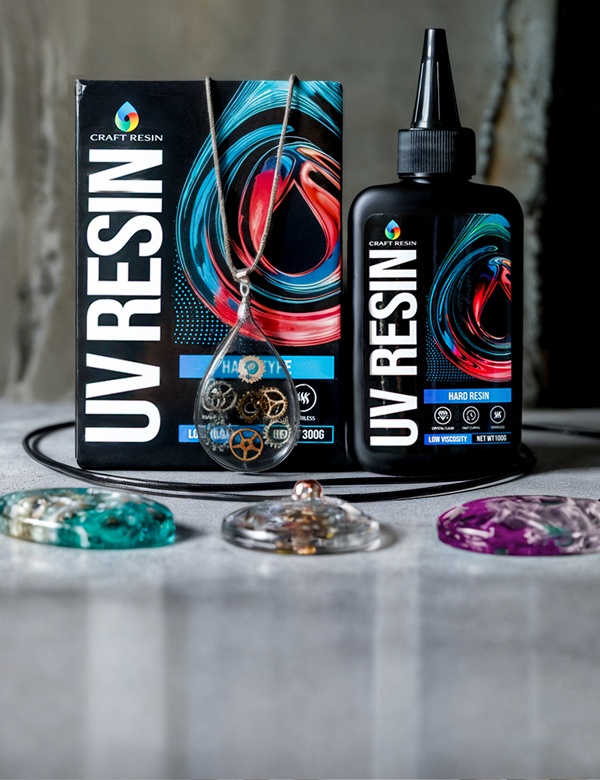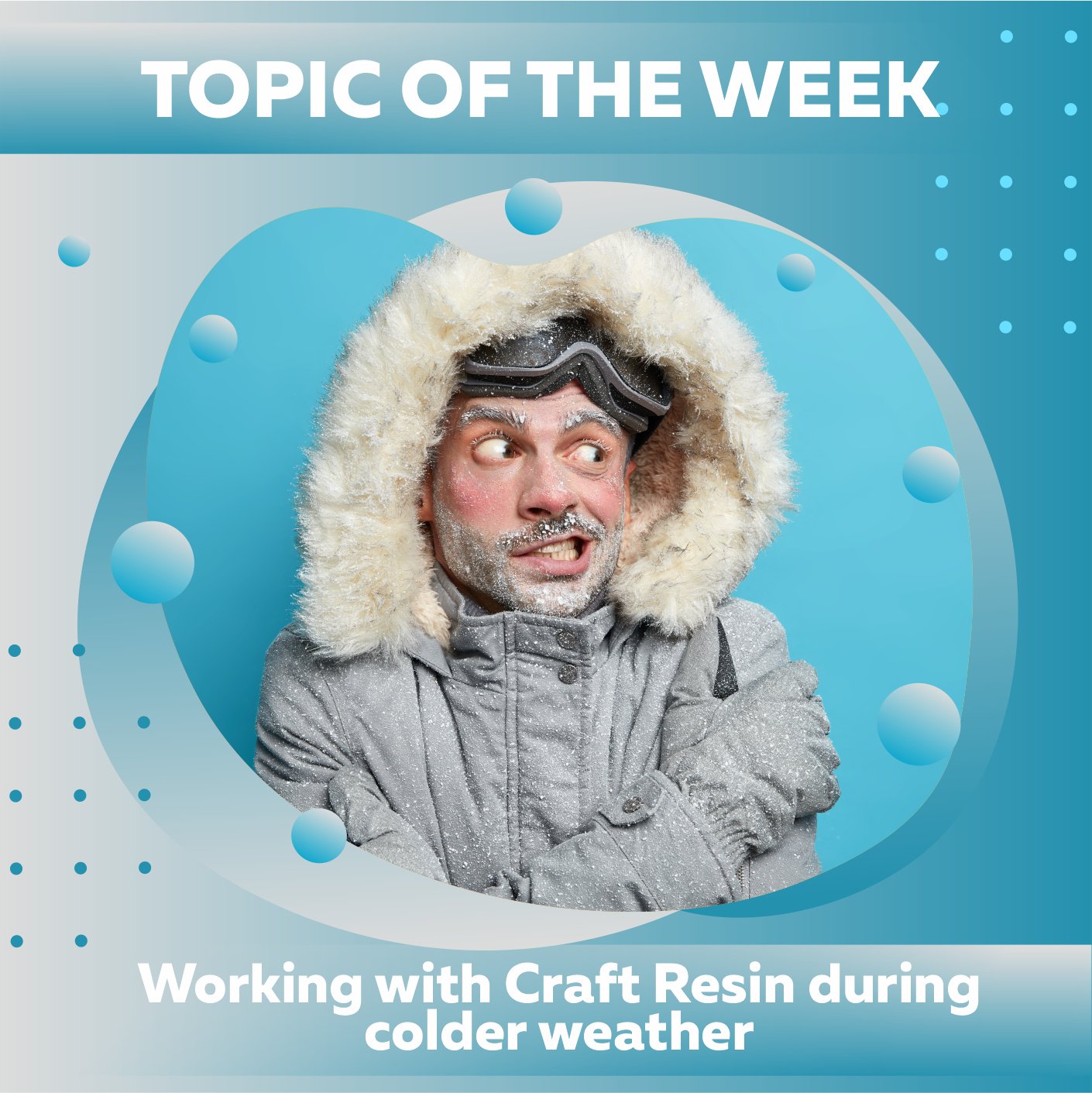Ok so it might not quite be as cold as the picture suggests where you're creating, but when using our brands resin it's important to note that temperatures is one of the most important things to monitor when working with our resin and during the curing stage.
Our brands epoxy resin loves temperatures between 21-24C or 70-75F. If temperatures dip below these then issues can occur in your resin creations and we don't want that, we want to help you create the most amazing projects.

When the temperature drops, you might start to notice the following issues:
- Micro-bubbles (cloudy, misty looking resin)
- Ripples
- Separations
- Not curing, or taking much longer to cure
If any of these occur then looking at your temperatures should be the first port of call. When it comes to temperatures you need to be monitoring:
- Your workspace temperature
- The temperature of your resin/hardener
- Your curing area (for the whole time the curing is taking place)
- Your substrate, base or mold
Let's look into these in more detail and explain why these are so important to monitor and get right when using epoxy resin...
Your workspace temperature:
It's important to make sure your working area, and curing area stays between 21-24C or 70-75F during at least the first 24 hours for most projects. If your work will be taking longer to cure than 24 hours then please keep the space warm for the duration of the cure.
During the curing phase it is essential that you keep your room between, or above these temperature guidelines with no fluctuations below these.
If you are stabilising your temperature during the day, but then at night your temperature dips below this, then issues can occur. Issues such as rippling, or dimples in the resin project can be a sign that the temperature has dipped during the curing process.
It can be difficult to regulate the temperature for the entire 24 hours, we understand this, but it is essential that you do in order for your resin projects to go well.
You can do this by switching your heating on while working with resin, or just the heating in your work room if you have this capability. You might be able to turn individual radiators off in other rooms that aren't in use. You could place a storage heater or electric heater in your resin room.
If your work space is close to these temperatures, then something as simple as buying a heat mat, placing your resin to cure on this and covering with a large tupperware container over the top to keep the heat in might do the job, especially when creating only a few smaller resin items. If the temperatures outside of the heat mat are much colder then this might not work.

The temperature of your resin/hardener:
Make sure your resin is between 21-24C or 70-75F.
Between these temperatures, Craft Resin is completely clear and has a smooth consistency, it’s very easy to move around and makes pouring a dream. When its cold this creates lots of tiny micro-bubbles which can make the resin look misty or murky.
If you want clear, glass like projects then you will need to ensure your resin mix is warm so that these do not appear, you won’t be able to get them out once your project has been poured, unlike larger surface bubbles that can appear, but are easy to get rid of with a heat torch.
Colder resin is more difficult to use, it’s thicker, harder to spread out and doesn’t usually self level either which will leave your project with things like a ripple effect on the surface, or uneven patches and holes of resin in your work.
To warm your resin/hardener up so that these issues don’t occur simply place them next to a radiator for a few hours before use, or place them in a sink of warm water. Please leave the lids on if you use this method, any moisture that gets into your bottles can cause issues, leaving the lids on and filling the sink below lid level will stop this from happening.
The temperature of the water shouldn’t be boiling, warm water will do, and then leave them to sit for about 10-15 minutes, depending on how warm your water is. You might want to experiment to get the perfect water temperature and length of time for yourself.
Make sure you dry the bottles with a towel after they have been in the water. If you don’t water can get into the bottles when you open the lids. You can then measure and pour your resin after this step.
Your curing area (for the whole time the curing is taking place):
We mentioned it before, but it's worth noting again - Your workspace needs to stay between 21-24C or 70-75F for the time your work is curing, not only while you're working on your project.
If the temperature dips below this during this time then issues with curing can occur, you work may not fully cure, or ripples or dimples may occur in your work.

Your substrate, base or mold:
If you've ensured all of your temperatures are set to warm, but your base, substrate or molds are cold this can cause temperature shock when the resin mix is then poured onto them. This can cause issues like rippling or separations.
Make sure that your molds/artwork has been resting in the warmer room for a couple of hours before you do pour the warmed resin onto them. If you still think these could be too cold to the touch, as even when resting in a warm room, a base can still be cooler than the room temperature, then maybe place them by or on a radiator if it's not too hot, or place them on a heat mat before use.
It's not just you that will want to stay cosy this winter, your resin projects will too.
Team Craft Resin







